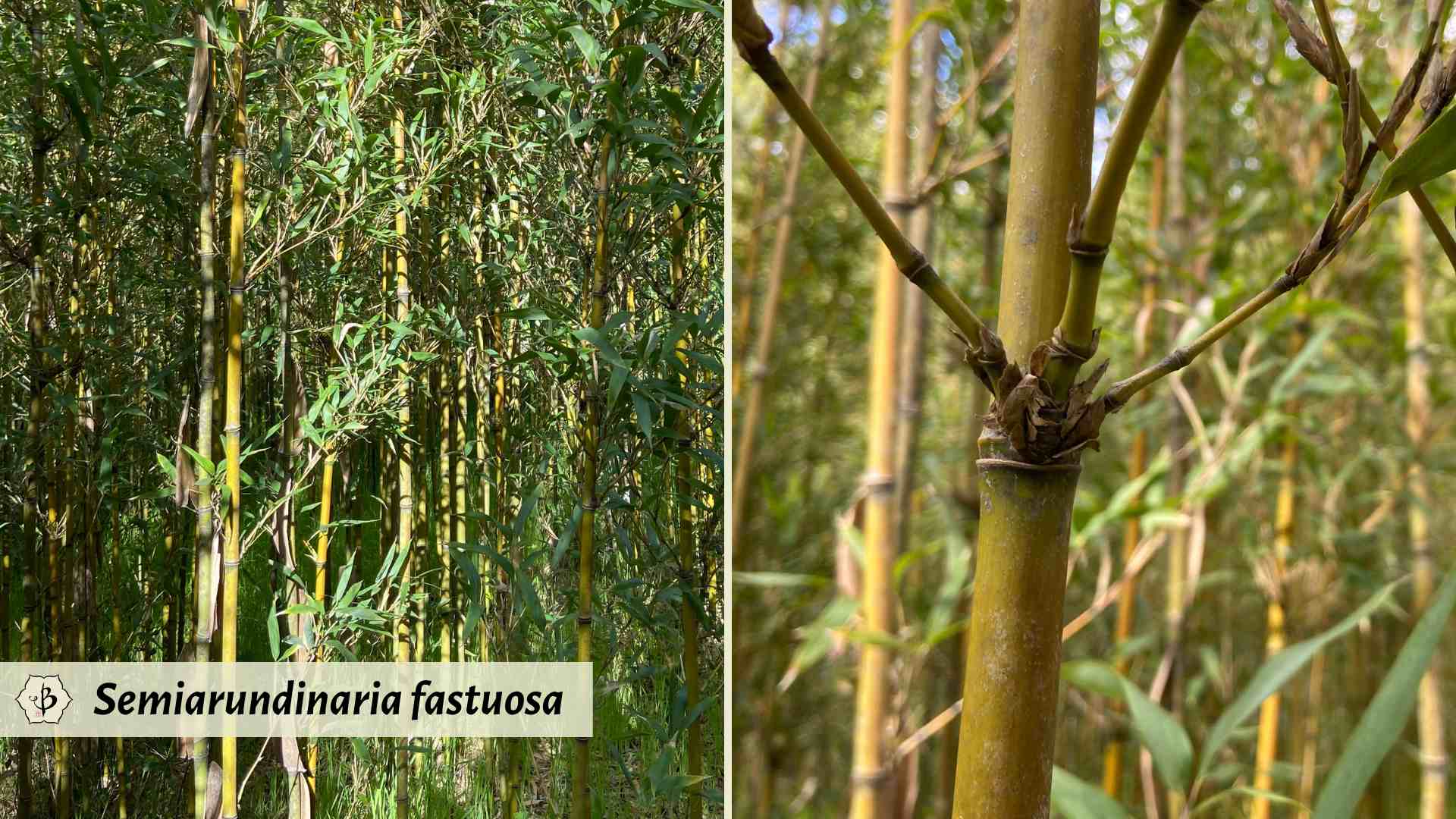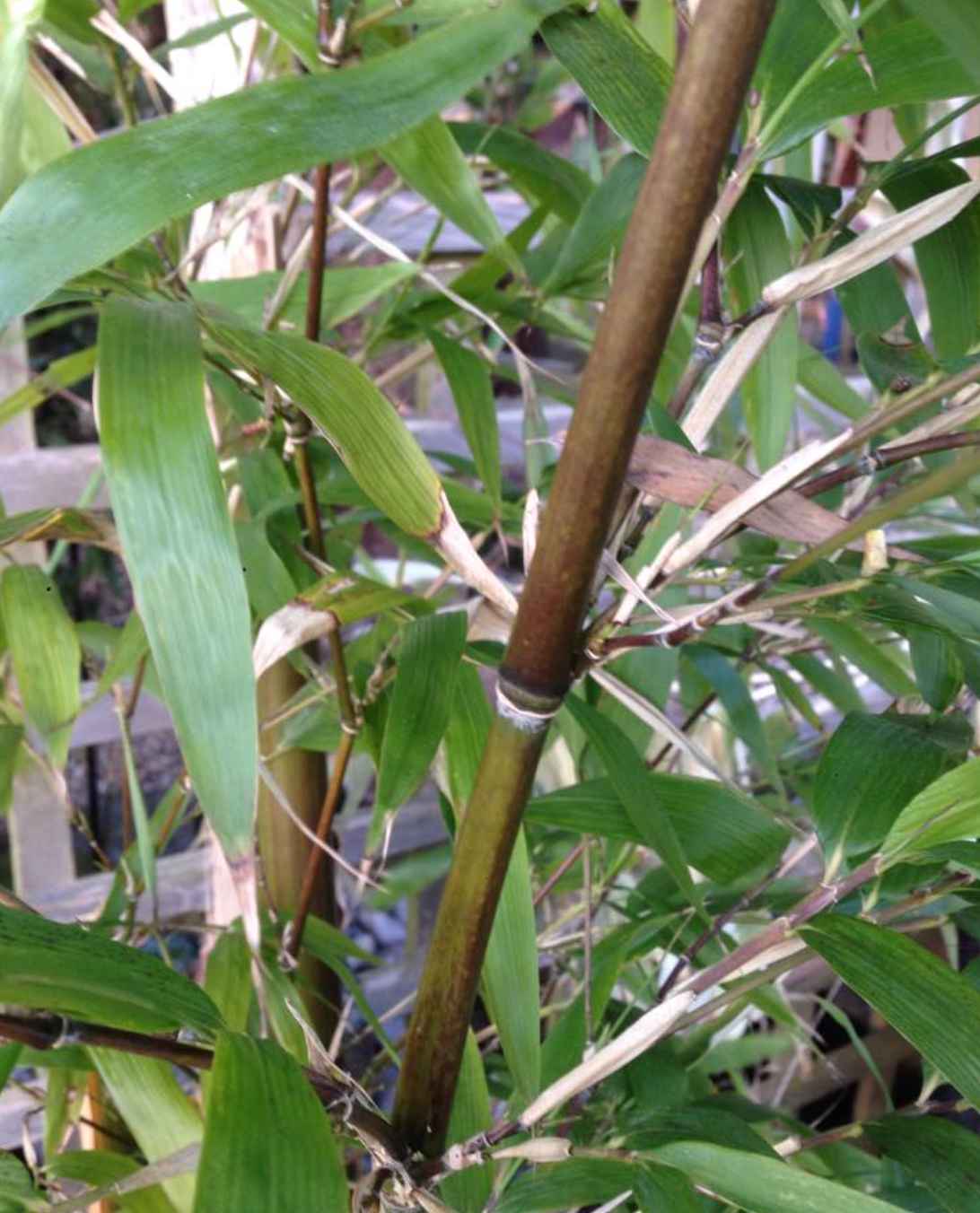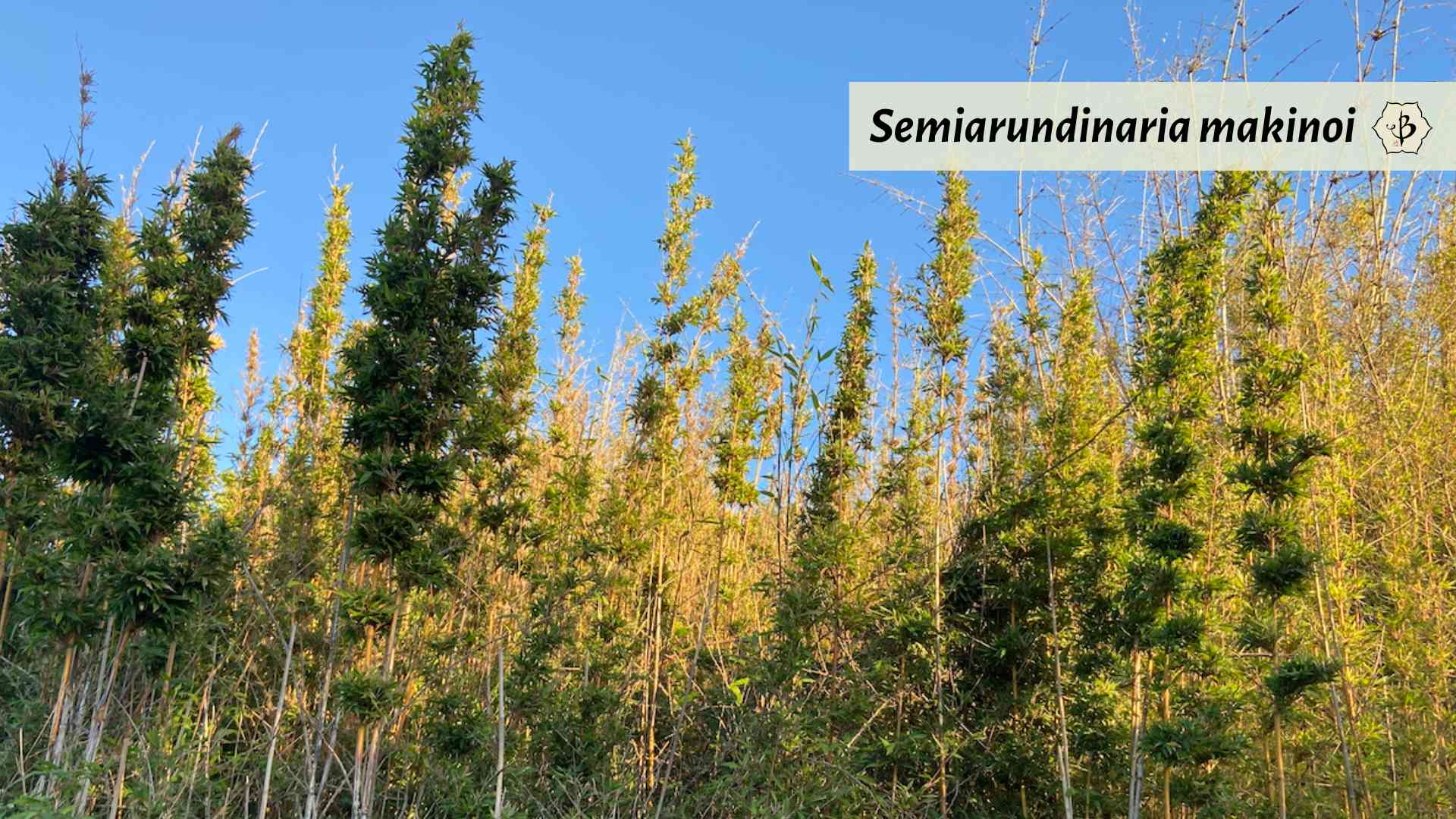When you have more than 1,200 species to choose from, selecting the best bamboo for your situation can be a daunting task. Some people say they want a hedge, or they want a clumper. That can narrow down the list to several hundred bamboo varieties, but there’s still a long way to go. You can also take your chances at the local nursery, where it could be as easy as choosing between Black Bamboo and Golden Bamboo. If you’re looking for something more unusual, but supremely beautiful, allow me to suggest Temple Bamboo, technically known as Semiarundinaria fastuosa.
Semiarundinaria fastuosa is a species of running bamboo, primarily native to Japan. It is more commonly known as Temple Bamboo, or by its Japanese name, Narihira. The plant has elegant, upright canes, often exceeding 30 feet in height. This makes it one of the largest species of temperate bamboo not belonging to the genus Phyllostachys. It’s cold hardy to 5º or 10º below zero F, and it grows well in shade or full sun.
This article — first published in May 2021 and last updated in January 2024 — is part of an ongoing series about some of the most popular species of commercial and ornamental bamboo. You might also be interested in some of the following varieties.

Characteristics of Semiarundinaria fastuosa
With a little practice, you can have a good time just letting the name roll off your tongue: Semiarundinaria fastuosa. But luckily, you can also call it Temple Bamboo, Japanese Palm Bamboo, or Narihira. If you’re shopping for this bamboo, you’ll want to have all these names on hand, because it’s not the most common of species, and not every nursery will be familiar with all of its monikers.
The species name, fastuosa, actually means “proud”. Indeed, this a very regal species of bamboo, with tall, elegant canes. Depending on the climate and growing conditions, the mature culms can grow 20 to 30 feet tall, or more. Individual poles typically get an inch or an inch and a half thick and are exceedingly straight. Fresh shoots come up deep green in color, but often turn a deep maroon or burgundy with time. This coloration is more pronounced in cooler climates and in with increased sun exposure, giving the plant a distinctly attractive appearance.
Semiarundinaria is a genus of temperate bamboo, as opposed to tropical bamboo. As such, all varieties of this genus are running bamboos. They have leptomorph rhizomes that run outward, parallel to the horizon and away from the main plant. In many cases, running bamboos will spend a couple years establishing a tenacious underground network of roots. Then, in the third or fourth year, the fresh shoots start sprouting up all over the yard.

But as far as running bamboos go, this species is actually pretty tame. In many ways, it closely resembles a Phyllostachys in appearance. But Temple Bamboo isn’t nearly as aggressive or invasive as those vigorous cousins. Even so, it’s always a good idea to plant a rhizome barrier around a running bamboo to keep the roots from getting into flower beds or the neighbor’s yard, where they don’t belong. (Check out our page of recommended bamboo garden supplies.)
The easiest way to distinguish this species from a variety of Phyllostachys is by looking at the nodal joints where the branches form. (See image above.) Phyllostachys will have two primary branches at each joint. But other bamboo, including Semiarundinaria or Pseudosasa, produce clusters of multiple branches. In general, the culms are also smoother, without the indented sulcus groove found on Phyllostachys.
Genus Semiarundinaria
Semiarundinaria is an unusual genus of temperate bamboo, primarily native to the islands of Japan, with fewer than 10 species in its clan. The exact number may vary depending on which author or taxonomist you ask. When it comes to recognizing these medium-sized running bamboo varieties, and distinguishing them from Phyllostachys, the branching patterns are the best indicator.
Phyllostachys always have two dominant branches at each nodal joint, with a varying number of smaller branches. Semiarundinaria characteristically have three branches per node. And in many cases, the branches form tight clusters, or tufts, around the node joint.

Semiarundinaria makinoi is a rare but attractive member of this genus. There is some debate surrounding the classification of this species as well as Semiarundinaria okuboi.
Semiarundinaria densiflora, also called short-spiked bamboo, short-tassled bamboo, or short spikelet bamboo, also belongs to this group.
Another ornamental species of this genus is Semiarundinaria yashadake, which includes a few different subspecies.

Why and where to plant Temple Bamboo
Semiarundinaria fastuosa makes a handsome addition to any garden, and it can flourish in a wide range of climates. Cold hardy down to negative territory on the Fahrenheit scale, it grows well in zones 5 or 6 all the way up to the semi-tropical range.
Despite its hardiness, the plant is not terribly aggressive. But eventually, it can provide a very attractive privacy hedge. With canes more than 20 feet tall and thick tufts of foliage, it does a good job of blocking out the noise and views of your neighborhood. The unusual color also makes it an eye-catching accent alongside other varieties of green and yellow bamboo. And given its native place of origin, S. fastuosa is an excellent choice in a Japanese garden.
The fresh shoots of Temple Bamboo are also popular for eating. If you have a big enough grove of S. fastuosa, you can make a side gig out of selling bamboo shoots to local Asian restaurants or health food stores. In smaller quantities, you can just save them for personal consumption. Just remember to boil the shoots first, to remove any toxins, before adding them to your traditional stir fry.
Temple Bamboo on California’s Central Coast
I kept my Temple Bamboo in a big barrel of a pot in my front yard for several years. We were in USDA zone 9b or 10a, in the coastal fog belt of San Luis Obispo County, where the soil is pure sand. My container was big enough to allow the plant to thrive, but it kept the running roots under control and also kept the poles from getting very tall. Even so, it made for a beautiful specimen plant. But eventually, the roots did penetrate the bottom of the container and get a foothold in the terra firma.
Although my Narihira Bamboo got into the ground, it never really got out of control. After 5 or 6 years, the plant’s total footprint was still only about 6 or 8 feet in diameter, with culms less than 10 feet tall. Perhaps if we had lived somewhere warmer and rainier, or with richer soil, it would have grown more aggressively.
I rarely fed this plant anything more than an annual serving of compost from our own garden. We had very sandy soil conditions, not so rich in nutrients. But the advantage was in how easily I could dig into the sand and prune the roots. I would do this regularly because my friends would often admire the beauty of this plant and ask for a cutting.
Further reading
If you enjoyed reading about Semiarundinaria fastuosa, or Temple Bamboo, you might also be interested in some of our other in-depth articles.
- Shopping for live bamboo plants
- Introducing bamboo: Genus by genus
- Where does bamboo come from?
- Bamboo for Japanese gardens
FEATURE IMAGE: A stately grove of Temple Bamboo provides a formidable windbreak at Bambu Parqure in Portugal. Photo by Fred Hornaday.


























I’m growing this Bamboo here in New York, in zone 7 A. It’s in partial sun, the soil is moist and a mix of clay and loam.
Do you notice that this species is very very slow in its growth?
I’m watching the shoots of my 1.5 year old plants. They are just bigger than a pencil, but the rate at which they extend is very very slow.
Any thoughts would be appreciated. Thank you, James in New York.
I would expect it to take a few years for this species to get well-established in New York. The first year or two I would only expect very thin shoots. Try mixing in some organic compost or chicken manure, and top it with a layer of mulch to insulate the roots for the winter, and I’ll bet you see some good results next spring.